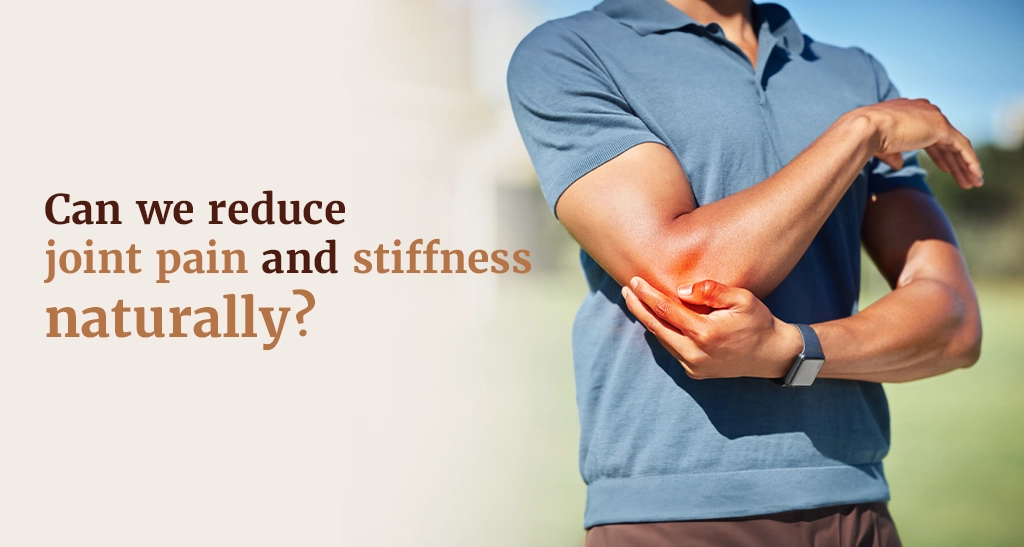Musculoskeletal problems are rapidly increasing in today’s world, with joint pain emerging as one of the most common health challenges. Joint pain now isn’t just an “old-age problem” anymore. Today, even young professionals, athletes, and busy homemakers are struggling with stiffness, swelling, and restricted movement. What starts as a dull ache in the knees, shoulders, or back often grows into a daily hurdle making it harder to climb stairs, sit for long hours, or even enjoy a restful night’s sleep. While many rely on painkillers for temporary relief, Ayurveda takes a deeper approach addressing the root cause of joint pain and helping you restore balance, strength, and flexibility naturally.
Why Joint Pain is Rising Today
Unlike arthritis, which is a specific condition, joint pain can result from multiple causes. Modern lifestyle factors play a huge role in making it more common across all age groups:
- Sedentary habits: Long hours of sitting weaken bones and muscles.
- Obesity: Extra body weight increases stress on knees, hips, and spine.
- Poor diet: Junk food, irregular meals, and low calcium intake weaken joints.
- Stress & lack of sleep: Disrupt digestion and increase inflammation.
- Aging: Natural wear and tear happens earlier due to lifestyle choices.
These lead to conditions such as arthritis, gout, slip disc, disc compression, and degenerative joint issues.
Ayurveda’s Understanding of Joint Pain
According to Ayurveda, joint pain is primarily linked to Vata imbalance. Vata governs movement in the body, and when disturbed, it leads to:
- Dryness and stiffness in the joints.
- Cracking pain with movement.
- Accumulation of Ama (toxins) in weak areas, worsening inflammation.
Joints (Sandhis) are considered important seats of Vata, which is why imbalance first shows up here as pain or swelling. Depending on whether Vata is aggravated (excess movement) or depleted (lack of lubrication), it can cause either overactivity or reduced flexibility.
Early Red Flags to Watch
Ignoring joint pain can worsen long-term health. Watch out for these warning signs:
- Stiffness in the morning or after rest.
- Pain that increases after sitting or standing for long hours.
- Swelling or warmth around a joint.
- Reduced mobility or difficulty in bending/stretching.
Diet for Joint Health in Ayurveda
A corrective diet is considered the first line of treatment in Ayurveda for both prevention and cure. Ayurvedic joint care focuses on balancing Vata through diet, herbs, Panchakarma therapies, and lifestyle modifications.
Foods that Aggravate Vata (to be avoided)
- Dry, cold, and light foods
- Tubers such as raw banana, potato, beetroot
- Dry pulses and sprouts
These foods increase stiffness, pain, and degeneration by worsening Vata.
Foods that Balance Vata (to be included)
- Warm, moist, and nourishing meals
- Liquids: soups, herbal teas, warm water
- Healthy fats: ghee, sesame oil, olive oil
- Anti-inflammatory spices: turmeric, ginger, cumin
- Flavors: more of sweet, sour, and salty tastes; less of bitter, pungent, and astringent
Herbs
- Shallaki (Boswellia): Reduces inflammation.
- Ashwagandha: Strengthens muscles and bones.
- Guggulu: Supports detoxification and relieves stiffness.
- Turmeric (Curcumin): Natural anti-inflammatory.
- Nirgundi – reduces swelling and stiffness
- Ginger – improves circulation, eases stiffness
Ayurvedic Therapies
- Abhyanga (Oil Massage): Improves circulation and reduces stiffness.
- Kizhi (Herbal Bolus Massage): Relieves deep-seated pain.
- Panchakarma TherapiesA cornerstone of Ayurvedic treatment, Panchakarma detoxifies the body, removes Ama (toxins), and restores dosha balance. Depending on the condition, therapies include:
- Snehanam (Oleation) – lubricates joints
- Swedana (Fomentation) – relieves stiffness and heaviness
- Virechanam (Purgation) – detoxifies Pitta and cleanses the system
- Basti (Medicated Enema) – most effective for balancing Vata and treating joint disorders
Basti therapy is considered highly effective in Ayurveda, often compared to modern intravenous treatment because of its quick and deep therapeutic action.
- Dhara & Pizhichil – full-body oil therapies that deeply nourish and restore joint health
Lifestyle & Yoga
- Practice gentle yoga asanas like Tadasana, Trikonasana, and Bhujangasana.
- Take short breaks from sitting every 45–60 minutes.
- Incorporate meditation and breathing practices to reduce stress.
Preventive Measures: Do’s and Don’ts
Don’ts
- Avoid overexertion, including heavy gym workouts
- Minimize exposure to cold and damp environments
- Don’t compromise on adequate sleep
- Avoid excessive fasting and dehydration
- Refrain from sitting for prolonged periods
Do’s
- Regular massages (weekly or fortnightly)
- Oil application on the head or knees at least once a week
- Stay hydrated with warm water, soups, and juices
- Address minor joint discomforts early to prevent progression
Why Ayurveda for Joint Pain?
Unlike conventional treatments that often focus only on symptom relief, Ayurveda addresses the root cause by:
- Balancing doshas, especially Vata
- Eliminating toxins (Ama) through detoxification
- Nourishing and strengthening bone and joint tissues
- Providing long-term relief without side effects
With timely intervention and the right therapies, Ayurveda can even help avoid surgical procedures in many cases, unless the condition has become extremely advanced.
Joint pain doesn’t have to limit your lifestyle or independence. Ayurveda offers a holistic path that combines nutrition, herbal remedies, therapies, and lifestyle practices to not just relieve pain, but also strengthen your joints for the long run. With the right care, flexibility and freedom of movement can be restored—without relying solely on temporary solutions like painkillers.











